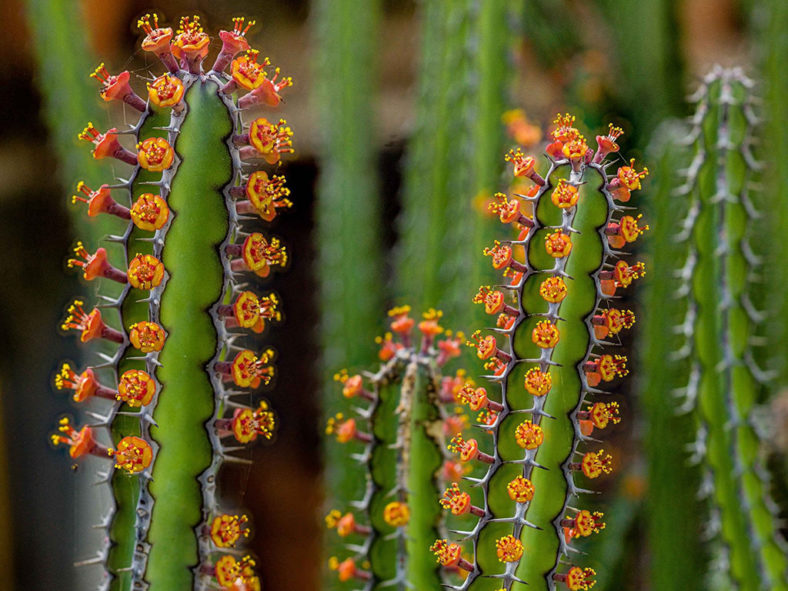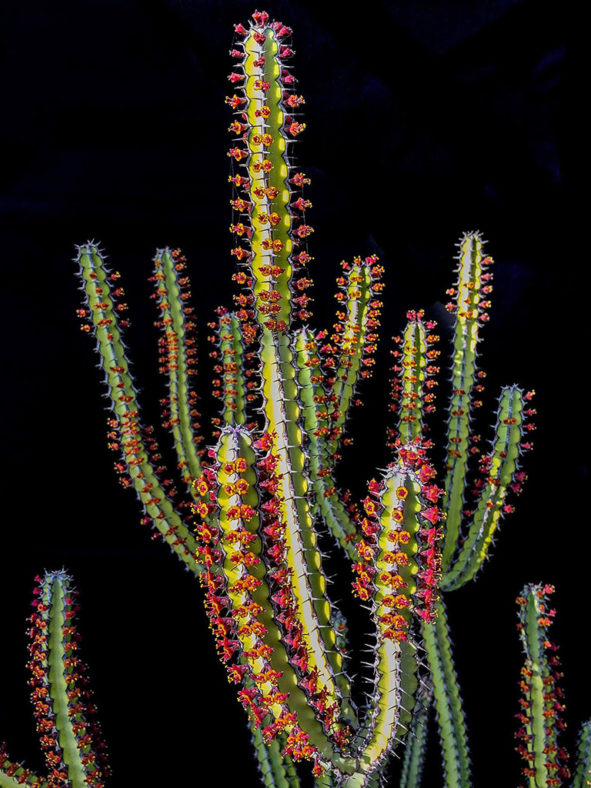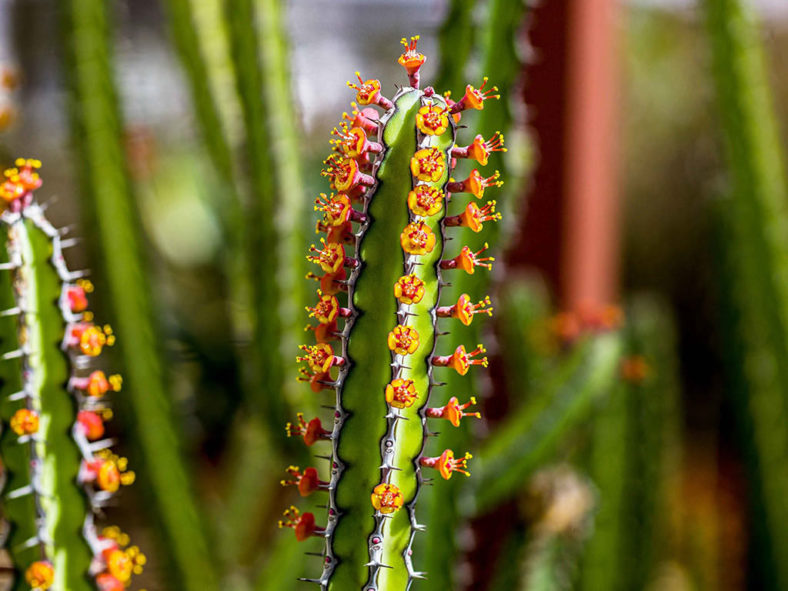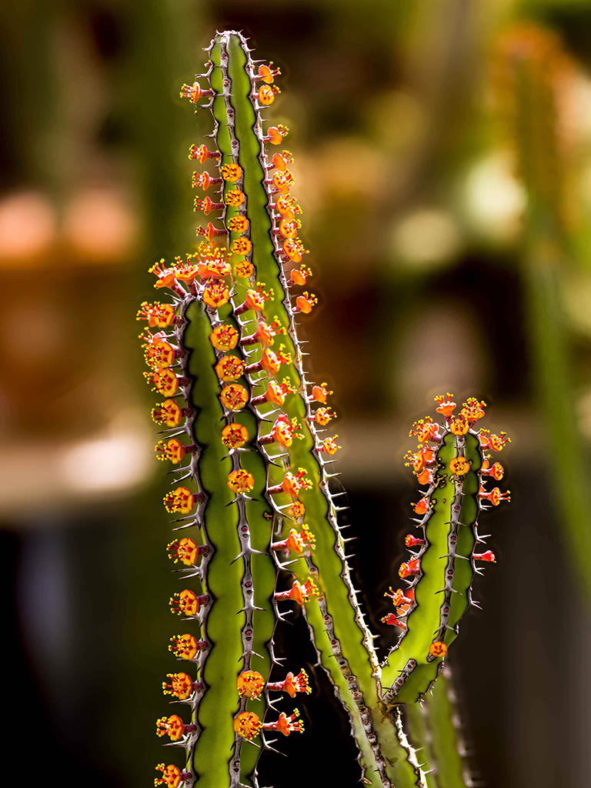Scientific Name
Euphorbia vulcanorum S.Carter
Scientific Classification
Family: Euphorbiaceae
Subfamily: Euphorbioideae
Tribe: Euphorbieae
Subtribe: Euphorbiinae
Genus: Euphorbia
Etymology
The specific epithet "vulcanorum (vul-kan-OR-um)" means "fiery; of volcanoes or volcanic soils" and refers to the native habitat of the species or its fiery appearance when in bloom.
Origin
Euphorbia vulcanorum is endemic to Marsabit County in Kenya, a forested area known for its volcanoes.
Description
Euphorbia vulcanorum is a densely branched succulent shrub with green, 4- to 5-angled branches attractively marked with spine shields that bear stout paired spines and form a continuous horny margin along the angles. It can grow up to 3.3 feet (1 m) tall and 4 feet (1.2 m) wide. The branches can reach up to 1 foot (30 cm) long and 0.8 inches (2 cm) thick. The angles are shallowly toothed and have teeth up to 0.6 inches (1.5 cm) apart. The spines can grow about 0.3 inches (0.8 cm) long. The leaves are ovate, soon deciduous, and can measure up to 0.7 inches (1.8 cm) long and 0.5 inches (1.3 cm) wide.
The flowers are small, showy orangish-red, and appear mainly in spring and fall. The fruits are 3-lobed capsules that are light brownish-yellow, flushed with red and contain tiny, gray seeds.

How to Grow and Care for Euphorbia vulcanorum
Light: This succulent is a sun lover. Place your indoor E. vulcanorum in a sunny window. You may place the pot on the balcony or in the garden from spring to fall. Increase sun exposure gradually to prevent sunburn.
Soil: E. vulcanorum requires well-drained soil. Use a commercial mixture formulated for succulents, or make your own potting mix.
Hardiness: High summer temperatures are not a problem, but low winter temperatures can damage or kill your plant. E. vulcanorum can withstand temperatures as low as 30 to 50 °F (-1.1 to 10 °C), USDA hardiness zones 10a to 11b.
Watering: From spring to fall, water when the top inch (2.5 cm) of soil feels dry. Reduce watering in winter. Give it just enough water to prevent wilting. The best time of the day to water your E. vulcanorum in the warm season is the evening.
Fertilizing: Plants in a pot need regular feeding. Apply a balanced fertilizer in a 10-10-10 NPK formulation, diluted to 1/4 strength weekly during the growing season.
Repotting: E. vulcanorum will benefit from repotting, but it does not need to be repotted yearly. When your plant is outgrowing its pot, it is time to repot it in a larger pot and give it a fresh potting mix. The repotting is best done in early spring, at the beginning of the growing season. Wear gloves, protective clothing, and appropriate eye protection when repotting this succulent.
Propagation: The easiest and fastest method of propagation for this plant is by using cuttings. It can also be grown from seeds, but it can be difficult to germinate and even hard to find. The best time to take cuttings is in spring or summer. Sow the seeds in spring.
Learn more at How to Grow and Care for Euphorbia.
Toxicity of Euphorbia vulcanorum
E. vulcanorum produces a toxic white milky sap that can irritate the skin and eyes. Therefore, keeping your plant away from children and pets is best.
Links
- Back to genus Euphorbia
- Succupedia: Browse succulents by Scientific Name, Common Name, Genus, Family, USDA Hardiness Zone, Origin, or cacti by Genus
Photo Gallery
Click on a photo to see a larger version.


